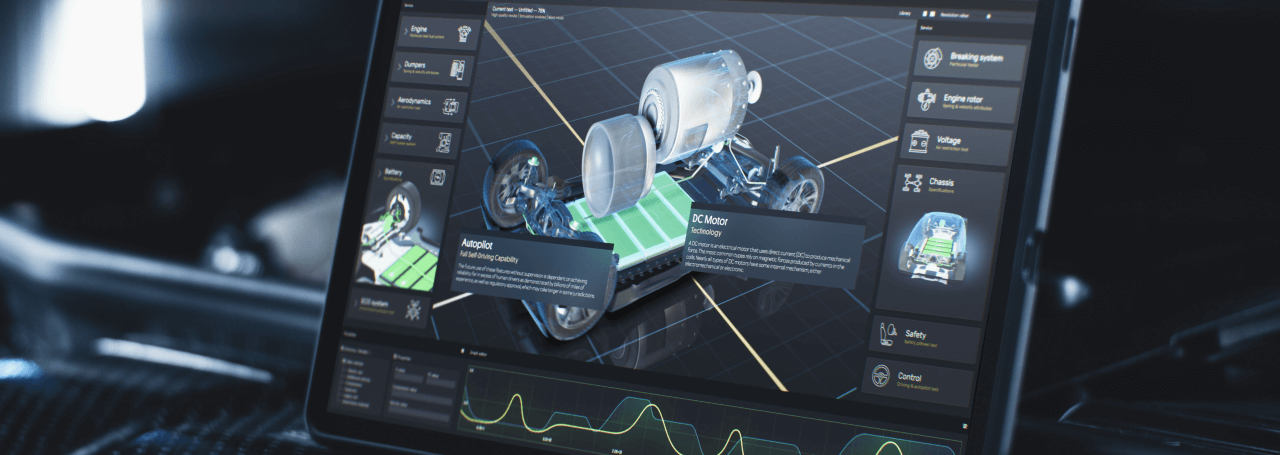- 1. Understanding the Functionality of Pin Headers in Electronic Devices
- The Impact of Pin Headers on Signal Transmission
- Exploring the Different Types of Pin Headers and Their Uses
- 4. The Role of Pin Headers in Enhancing Electronic Connectivity
- 5. Key Factors to Consider When Choosing Pin Headers for Electronic Projects
- 6. Future Trends: The Evolution and Advancements in Pin Header Technology
- Frequently Asked Questions
- What are the common materials used in making pin headers?
- How do pin headers contribute to the overall performance of an electronic device?
- Can pin headers be used in high-frequency applications?
- What are the potential issues that can arise from using low-quality pin headers?
- What are the recent advancements in pin header technology?
In the world of electronics, the smallest components often play the most critical roles. One such component is the humble pin header, a simple yet essential piece of hardware that forms the backbone of electronic connectivity. As an electronics enthusiast, I remember the first time I came across a pin header. It was during a DIY project, and I was initially baffled by its simplicity. Little did I know, this unassuming component would become a cornerstone in my understanding of electronic devices.
In this article, we delve into the fascinating world of pin headers, shedding light on their functionality and their pivotal role in signal transmission. We will explore the various types of pin headers and their specific uses, offering you a comprehensive understanding of their importance in enhancing electronic connectivity.
Choosing the right pin header for your electronic project can be a daunting task, especially given the wide range of options available. We aim to alleviate this challenge by providing key factors to consider when making your selection. Moreover, we will look into the future, discussing the evolution and advancements in pin header technology, and how these changes might influence your future projects.
Whether you’re a seasoned electronics professional or a curious beginner, understanding the role of pin headers in electronic connectivity is crucial. So, join us as we demystify this essential component, helping you navigate the complex yet exciting world of electronics.
1. Understanding the Functionality of Pin Headers in Electronic Devices
When it comes to the realm of electronic connectivity, pin headers play an indispensable role. These components, often overlooked, are the backbone of many electronic devices, facilitating the seamless transfer of signals and power. They are the unsung heroes that ensure the smooth operation of a wide array of electronic devices, from computers to home appliances.
Pin headers are essentially a form of electrical connector. They are comprised of one or more rows of pins, which are typically housed in a plastic connector. These pins are designed to mate with a corresponding female connector, forming a secure and reliable electrical connection. Tip: It’s crucial to ensure that the pin headers are correctly aligned with the female connector to avoid any potential damage or malfunction.
One of the key advantages of pin headers is their versatility. They can be found in a variety of configurations, including straight, right-angle, and surface-mount, to name a few. This allows them to be used in a wide range of applications, from simple DIY projects to complex industrial machinery. Remember: Choosing the right type of pin header for your specific application can significantly enhance the performance and reliability of your device.
The Impact of Pin Headers on Signal Transmission
Signal transmission is a critical aspect of any electronic system, and pin headers play a pivotal role in ensuring its efficiency. These components act as bridges, enabling the transfer of signals between different parts of a circuit. The quality of pin headers can significantly influence the speed and accuracy of signal transmission. High-quality pin headers ensure minimal signal loss, thereby enhancing the overall performance of the electronic system.
Moreover, pin headers contribute to the flexibility and adaptability of electronic systems. They allow for easy connection and disconnection of components, facilitating modifications and upgrades without disrupting the entire system. This adaptability is crucial in today’s rapidly evolving technological landscape, where electronic systems need to be continually updated to keep pace with advancements.
In conclusion, the role of pin headers in electronic connectivity is indispensable. They not only facilitate efficient signal transmission but also contribute to the adaptability of electronic systems. Therefore, the selection of high-quality pin headers is crucial in the design and development of electronic systems. Investing in superior pin headers can significantly enhance the performance and longevity of these systems, thereby providing a competitive edge in the market.
Exploring the Different Types of Pin Headers and Their Uses
Delving into the realm of electronic connectivity, one cannot overlook the significance of pin headers. These components, often undefined by many, play a pivotal role in ensuring seamless connections. They come in a variety of types, each designed to cater to specific needs and applications. From single and double row pin headers to shrouded and unshrouded versions, the diversity is vast, offering flexibility in design and functionality.
Let’s take a closer look at single and double row pin headers. These are the most common types used in electronic devices. Single row pin headers consist of one row of pins, while double row pin headers have two parallel rows. They are typically used in spaces where high-density interconnects are required, such as computer motherboards and peripheral devices.
On the other hand, shrouded pin headers are designed with a plastic casing or ‘shroud’ around the pins. This shroud helps to prevent misalignment, ensuring a secure and correct connection. They are often used in applications where a robust and reliable connection is paramount. Conversely, unshrouded pin headers lack this protective casing, offering a more compact solution for space-constrained applications. Understanding these different types of pin headers and their uses can greatly enhance the efficiency and reliability of electronic connectivity.
4. The Role of Pin Headers in Enhancing Electronic Connectivity
Electronic devices rely heavily on the efficient transmission of signals to function optimally. Pin headers play a pivotal role in this process, serving as the bridge that connects different components within a device. They are the unsung heroes in the realm of electronic connectivity, ensuring seamless communication between various parts of an electronic system. Their versatility allows them to be used in a wide range of applications, from computers and telecommunication equipment to industrial machinery and medical devices.
However, like any other component, pin headers come with their own set of advantages and disadvantages. On the positive side, they offer reliable and robust connections, are easy to use, and are cost-effective. They also provide flexibility in terms of configuration, allowing for customization based on specific needs. On the downside, their physical size can be a limiting factor in miniaturized applications. Additionally, they may not be suitable for high-frequency applications due to potential signal integrity issues. Despite these challenges, the essential role of pin headers in enhancing electronic connectivity cannot be overstated.
5. Key Factors to Consider When Choosing Pin Headers for Electronic Projects
Choosing the right pin headers for your electronic projects is a critical decision that can significantly impact the performance and reliability of your devices. One of the key factors to consider is the pitch size. The pitch size refers to the distance between the center of one pin to the center of the next pin. Standard pitch sizes include 2.54mm, 2mm, 1.27mm, and 1mm. The choice of pitch size depends on the application, with smaller pitch sizes typically used in high-density applications.
| Pitch Size | Application |
|---|---|
| 2.54mm | General purpose applications |
| 2mm | Compact devices |
| 1.27mm | High-density applications |
| 1mm | Ultra high-density applications |
The number of rows and contacts is another crucial factor. Single row pin headers are commonly used for low-density applications, while double row pin headers are used for higher density applications. The number of contacts, on the other hand, depends on the number of signals that need to be transmitted. For instance, a 40-pin header can transmit 40 signals.
Lastly, the material and plating of the pin headers should also be considered. Gold-plated pin headers offer superior conductivity and corrosion resistance, making them ideal for high-performance applications. However, they are more expensive than tin-plated pin headers, which are more commonly used in standard applications.
6. Future Trends: The Evolution and Advancements in Pin Header Technology
As technology continues to evolve, so does the role and design of pin headers. The demand for smaller, more efficient devices is driving the development of miniaturized pin headers that can support high-speed data transmission. For instance, the 1.27mm pitch pin header is becoming increasingly popular in applications requiring compact, high-density connections. On the other hand, the 2.54mm pitch pin header remains the standard for general-purpose applications due to its robustness and ease of use.
| Pin Header Type | Applications | Advantages |
|---|---|---|
| 1.27mm Pitch Pin Header | High-speed data transmission, compact devices | High-density connections, space-saving |
| 2.54mm Pitch Pin Header | General-purpose applications | Robustness, ease of use |
Moreover, the advent of surface mount technology (SMT) has revolutionized the way pin headers are mounted on PCBs, offering better mechanical strength and electrical conductivity. In the future, we can expect to see more advancements in pin header technology, such as the integration of smart features for enhanced connectivity and performance.
Frequently Asked Questions
What are the common materials used in making pin headers?
Pin headers are commonly made from a variety of materials, including brass, phosphor bronze, and beryllium copper. These materials are chosen for their durability, conductivity, and resistance to corrosion. The pins are typically plated with gold or tin for enhanced conductivity and corrosion resistance.
How do pin headers contribute to the overall performance of an electronic device?
Pin headers play a crucial role in the overall performance of an electronic device. They provide a reliable and efficient means of connecting different components within the device. This ensures smooth signal transmission, which is essential for the device to function optimally. Without pin headers, it would be challenging to establish these connections, leading to potential performance issues.
Can pin headers be used in high-frequency applications?
Yes, certain types of pin headers are designed to be used in high-frequency applications. These pin headers are typically made from materials with high conductivity and are designed to minimize signal loss, ensuring efficient signal transmission even at high frequencies.
What are the potential issues that can arise from using low-quality pin headers?
Using low-quality pin headers can lead to a variety of issues, including poor signal transmission, increased risk of corrosion, and reduced lifespan of the electronic device. These issues can result in poor performance and frequent need for repairs or replacements, leading to increased costs in the long run.
What are the recent advancements in pin header technology?
Recent advancements in pin header technology include the development of high-density pin headers that allow for more connections in a smaller space, and the introduction of surface mount technology (SMT) pin headers that can be directly soldered onto the surface of a printed circuit board (PCB), eliminating the need for through-hole soldering. These advancements have made pin headers more versatile and efficient, further enhancing their role in electronic connectivity.
DISCOVER OUR
Whitepaper
Achieve the perfect user-display interaction with the right Touch Sensor IC. Ever faced issues with phantom touch events or certification? Boost your R&D like a pro with our Whitepaper!



